Two incredibly well-preserved homes have been discovered at Must Farm quarry in Whittlesey, East Anglia, during an excavation. The extraordinary find will give us further insight into what domestic life was like for people in the British Isles three thousand years ago.
Archaeologist, who say the dwellings date from 1200 BC to 800 BC, i.e. the end of the Bronze Age, would have included several families who lived in houses that were built above the water on stilts.
According to Historic England, the settlement was destroyed by a fire and the homes fell into the river, where they were preserved in the contents (clay) of the river bed.
 Bronze Age piles preserved within the river silts and collapsed structural timbers. (Image: historicengland.org.uk. Credit: Cambridge Archaeological Unit)
Bronze Age piles preserved within the river silts and collapsed structural timbers. (Image: historicengland.org.uk. Credit: Cambridge Archaeological Unit)
A team from the Cambridge Archaeological Unit, part of the University of Cambridge, explains that what we have now is a wonderful time capsule that contains exceptional artefacts such as rare small jars, cups and bowls with past meals still inside them, as well as exceptional textiles made from the fibres of lime tree bark.
From what we can tell so far, the inhabitants preferred eating mutton and beef, rather than the fish found in nearby rivers.
Some of the unearthed items tell how surprisingly sophisticated Britain’s Bronze Age inhabitants were. They found, for example, glass beads that formed part of an elaborate necklace.
More complete picture of Bronze Age life in Britain
The archaeologists claim the exposed structures are the best-preserved dwellings from the Bronze Age ever found in the UK, and the finds, taken together, now give us a much more complete picture of prehistoric life than we ever had before.
Chief Executive of Historic England, Duncan Wilson, said:
“A dramatic fire 3,000 years ago combined with subsequent waterlogged preservation has left to us a frozen moment in time, which gives us a graphic picture of life in the Bronze Age. We are learning more about the food our ancestors ate, and the pottery they used to cook and serve it.”
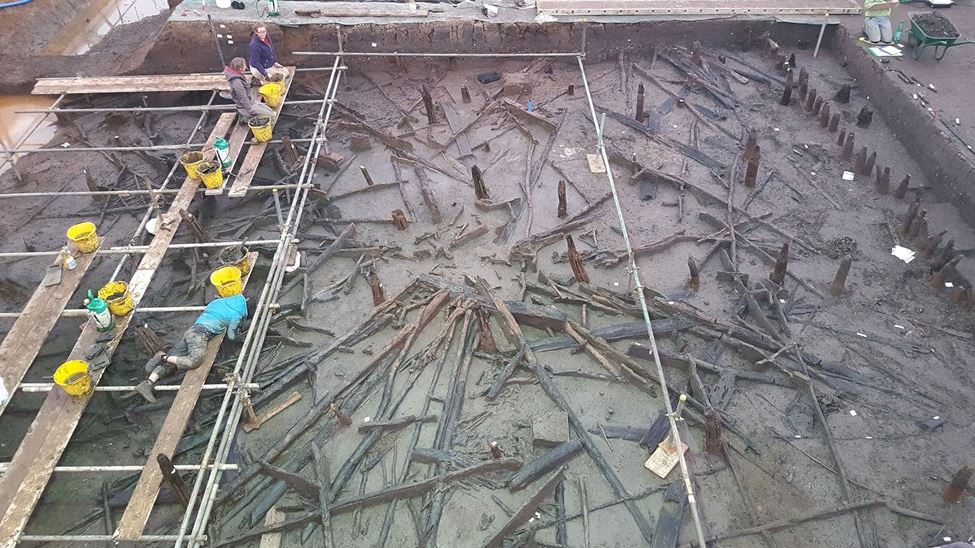 Archaeologists at Must Farm, who have uncovered the charred wooden roof structure of a 3,000 year old round house, believe what they have unearthed so far may be just the tip of an archaeological iceberg. (Image: historicengland.org.uk. Credit: Cambridge Archaeological Unit)
Archaeologists at Must Farm, who have uncovered the charred wooden roof structure of a 3,000 year old round house, believe what they have unearthed so far may be just the tip of an archaeological iceberg. (Image: historicengland.org.uk. Credit: Cambridge Archaeological Unit)
“We can also get an idea of how different rooms were used. This site is of international significance and its excavation really will transform our understanding of the period.”
Dwellings abandoned in a hurry
The extremely well-preserved charred roof timbers of one of the roundhouses are clearly visible. The site has a perimeter of wooden posts – a palisade – that once enclosed the site.
The researchers believe the inhabitants of the settlement left their homes in haste, without having time to take anything with them when it caught fire. Everything has been amazingly well preserved in clay. They even found footprints of people who once lived there.
We don’t know what caused the fire that sent the houses to the bottom of the river. However, from the clay remains, archaeologists have been able to get an idea of how big the houses were and what degree of pitch roof was fitted (32 degrees).
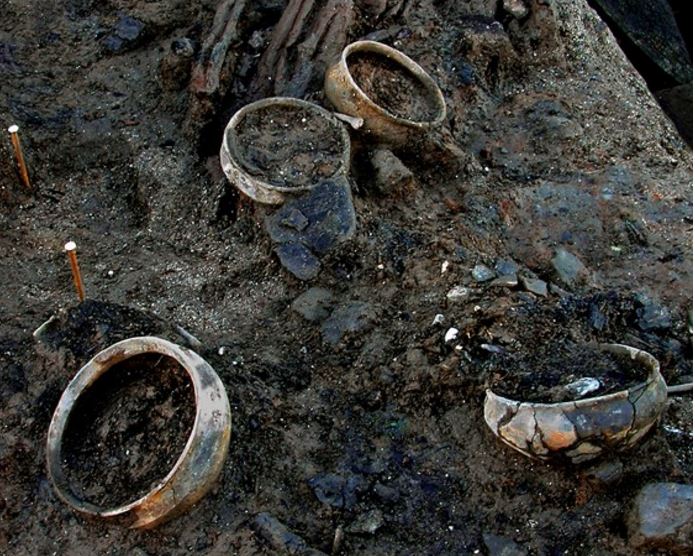 Whole pots and bowls were found at the site, some even had contents of a meal in them. (Image: historicengland.org. uk. Credit: Cambridge Archaeological Unit)
Whole pots and bowls were found at the site, some even had contents of a meal in them. (Image: historicengland.org. uk. Credit: Cambridge Archaeological Unit)
More excavation to be done
The finds unearthed so far suggest they may be just the tip of an archaeological iceberg. There is probably much more to be discovered in the rest of the site as excavation continues in the months to come.
After the excavation is finished, the scientists will take everything they found for further analysis and conservation. They will eventually be on display at the Peterborough Museum and other venues in East Anglia.
When the four-year Must Farm project is complete, there will be a major publication about the site and an online resource detailing everything that was unearthed.
A major wetland site
The site, which is currently a clay quarry owned by Fortrerra, is close to Whittlesey, an ancient Fenland market town about six miles east of Peterborough in Cambridgeshire. The site sits astride a prehistoric watercourse within the Flag Fen basin.
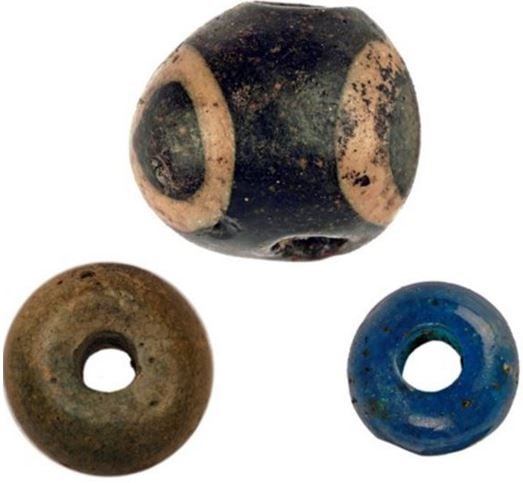 These exotic beads were part of a necklace, a sophistication not typically associated with the British Bronze Age. (Image: historicengland.org. uk. Credit: Cambridge Archaeological Unit)
These exotic beads were part of a necklace, a sophistication not typically associated with the British Bronze Age. (Image: historicengland.org. uk. Credit: Cambridge Archaeological Unit)
The archaeological site is two metres below the surface of the ground. Over the past three thousand years, ground levels have risen. Archaeologists say they have now reached the riverbed as it was when people lived in the settlement around 1000-800BC.
Over the years, archaeologists have found several examples of Bronze Age metalwork at the site, including a sword and rapier in 1969, and nine pristinely preserved log boats in 2011.
Must Farm Project partners
The major project is being financed by Must Farm quarry owner, the building products manufacturer Forterra, and Historic England (Formerly English Heritage).
The excavation is being done by a team from the Cambridge Archaeological Unit. Team members say they are half-way through the project.
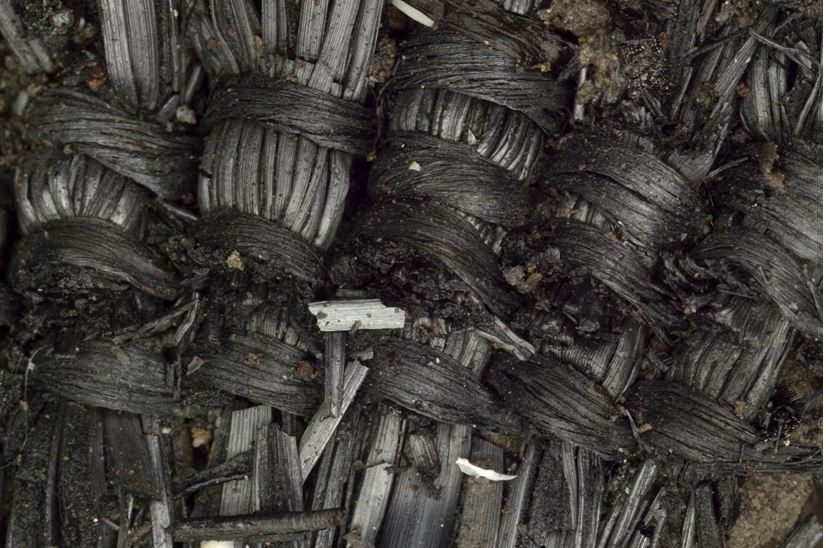 Incredibly well-preserved Bronze Age textiles made from plant fibres. (Image: historicengland.org. uk. Credit: Cambridge Archaeological Unit)
Incredibly well-preserved Bronze Age textiles made from plant fibres. (Image: historicengland.org. uk. Credit: Cambridge Archaeological Unit)
Archaeological Manager at the Cambridge Archaeological Unit, David Gibson, said:
“Usually at a Later Bronze Age period site you get pits, post-holes and maybe one or two really exciting metal finds. Convincing people that such places were once thriving settlements takes some imagination.”
“But this time so much more has been preserved – we can actually see everyday life during the Bronze Age in the round. It’s prehistoric archaeology in 3D with an unsurpassed finds assemblage both in terms of range and quantity.”
Excavation Site Director Mark Knight said:
“Must Farm is the first large-scale investigation of the deeply buried sediments of the fens and we uncover the perfectly preserved remains of prehistoric settlement.”
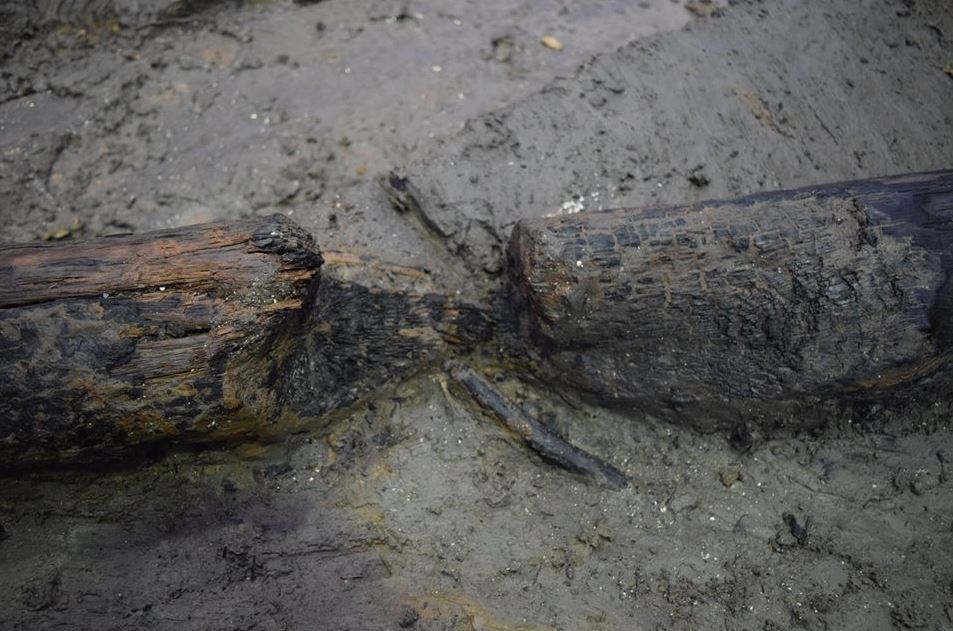 The gap in the centre of the badly burnt timber appears to be the remnants of a mortise joint. Forensic fire investigators are looking for specimens like this one to better understand the cause of the blaze. (Image: facebook.com/MustFarmArchaeology)
The gap in the centre of the badly burnt timber appears to be the remnants of a mortise joint. Forensic fire investigators are looking for specimens like this one to better understand the cause of the blaze. (Image: facebook.com/MustFarmArchaeology)
“Everything suggests the site is not a one-off but in fact presents a template of an undiscovered community that thrived 3,000 years ago ‘beneath’ Britain’s largest wetland.”
Head of Land and Mineral Resources at Forterra, Brian Chapman, said:
“We’re delighted to be part of this incredible project which demonstrates our commitment to preserving the unique history of the site and look forward to working closely with our partners over the coming months and years.”
Chairman of the Environment and Economy Committee at Cambridgeshire County Council, County Councillor Ian Bates, said:
“We recognised early on the significance of the site and worked closely with partners to ensure the safe recovery of the archaeology found there. The Bronze Age finds really are of national prominence and it is important that it is preserved as a local legacy and for national audiences.”
Video – Bronze Age homes unearthed in East Anglia
In this Historic England video, Historian Dan Snow introduces the Must Farm site, where archaeologists have revealed incredibly well-preserved Bronze Age dwellings.
